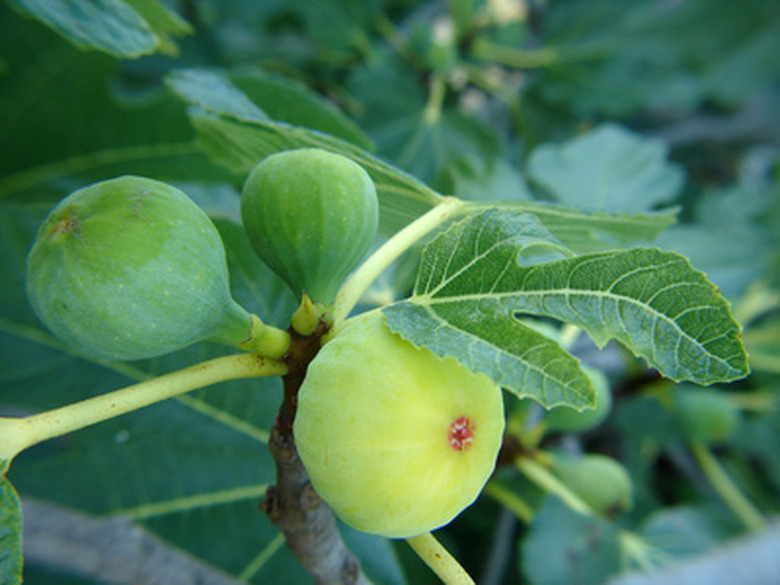Fig Tree Varieties In Zone 6
Zone 6 on the U.S. Department of Agriculture (USDA) Plant Hardiness map is a large swath that encompasses most of the upper South, including northern Tennessee, southern Missouri and southern Oklahoma as well as parts of some western and mid-Atlantic states. Temperatures in these areas can drop to -5 degrees Fahrenheit and some types of fig (Ficus carica) trees can thrive in these areas.
Osborn Prolific
The best fig for colder climates, the Osborn Prolific cultivar will thrive in zones 6 to 9, particularly in the Pacific Northwest. This tree produces a medium to large fruit with purple-brown skin and sweet white-amber flesh. Fruit is best suited for eating fresh. The tree can grow to 30 feet, has sparse rough green foliage and, unlike many other figs, will grow in part shade. Osborn Pacific requires regular water.
- Zone 6 on the U.S. Department of Agriculture (USDA) Plant Hardiness map is a large swath that encompasses most of the upper South, including northern Tennessee, southern Missouri and southern Oklahoma as well as parts of some western and mid-Atlantic states.
- The tree can grow to 30 feet, has sparse rough green foliage and, unlike many other figs, will grow in part shade.
Blanche
Blanche, which is also known as the Italian Honey Fig, or the Lemon Fig, is also a good choice for cool-summer areas with short growing seasons and will produce fruit in zones 6 to 9. This slow-growing tree can reach 15 feet and produces medium to large fruit with green-yellow skin and amber or white flesh. Figs are sweet but lemony. This tree has dense foliage.
Desert King
Desert King originated in Madera, California in 1920 and is a good selection for cool-summer areas, including zone 6. It is hardy in zones 5 to 9. Desert King produces large green fruit with pink flesh that is good for eating fresh or drying. Skin has small white dots. This tree is fast growing and can reach 15 feet tall.
- Blanche, which is also known as the Italian Honey Fig, or the Lemon Fig, is also a good choice for cool-summer areas with short growing seasons and will produce fruit in zones 6 to 9.
- This slow-growing tree can reach 15 feet and produces medium to large fruit with green-yellow skin and amber or white flesh.
Verte
Verte figs need little heat and will thrive in short-summer locations, including zone 6, though the tree will need winter protection. It is hardy to zone 10. This tree produces small yellow-green fruit with mild-tasting pink flesh. Fruit is good for eating fresh or drying. This tree will grow to 10 feet.
